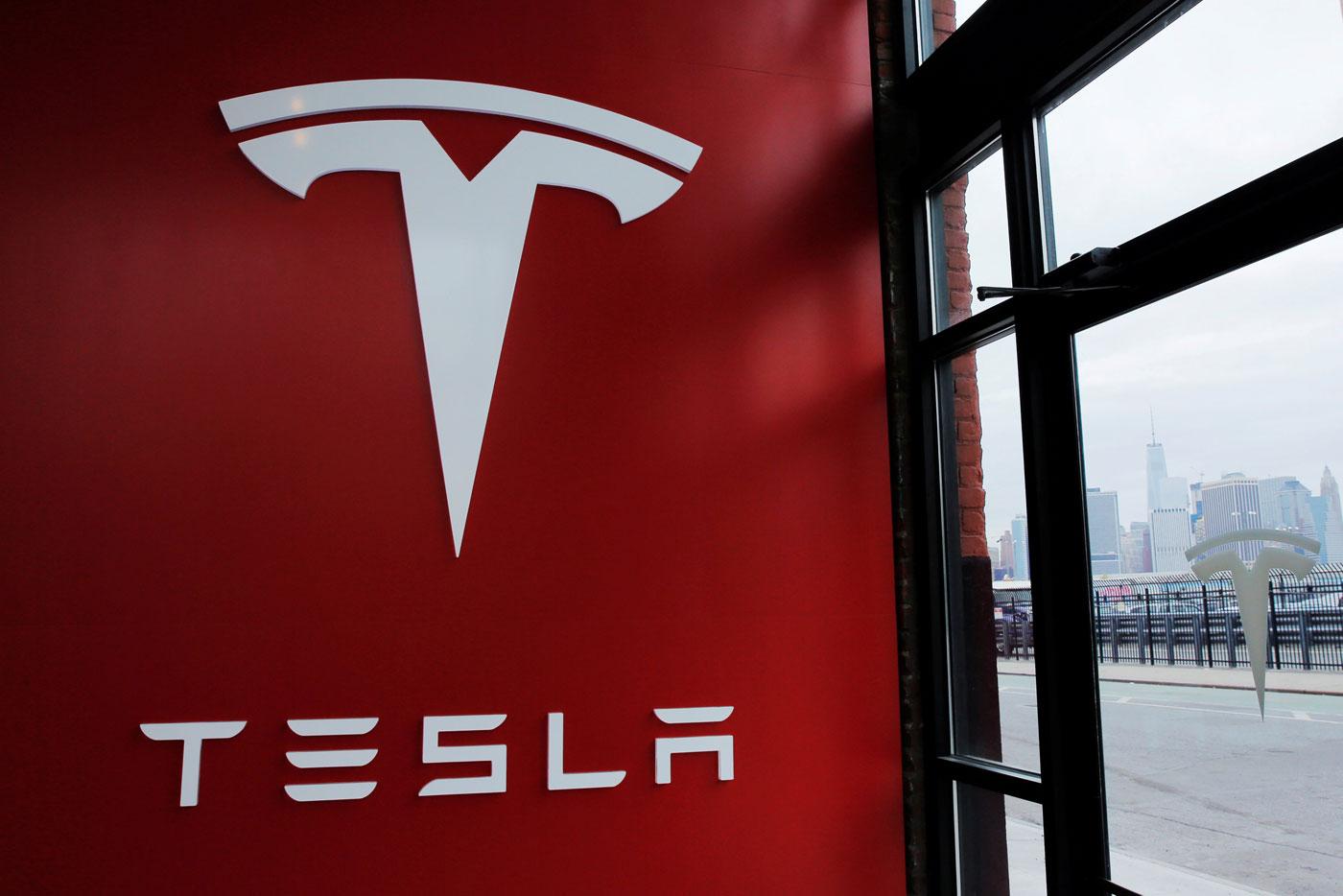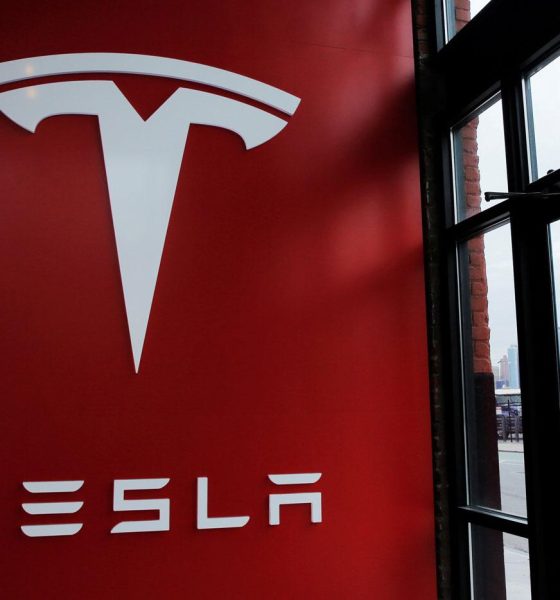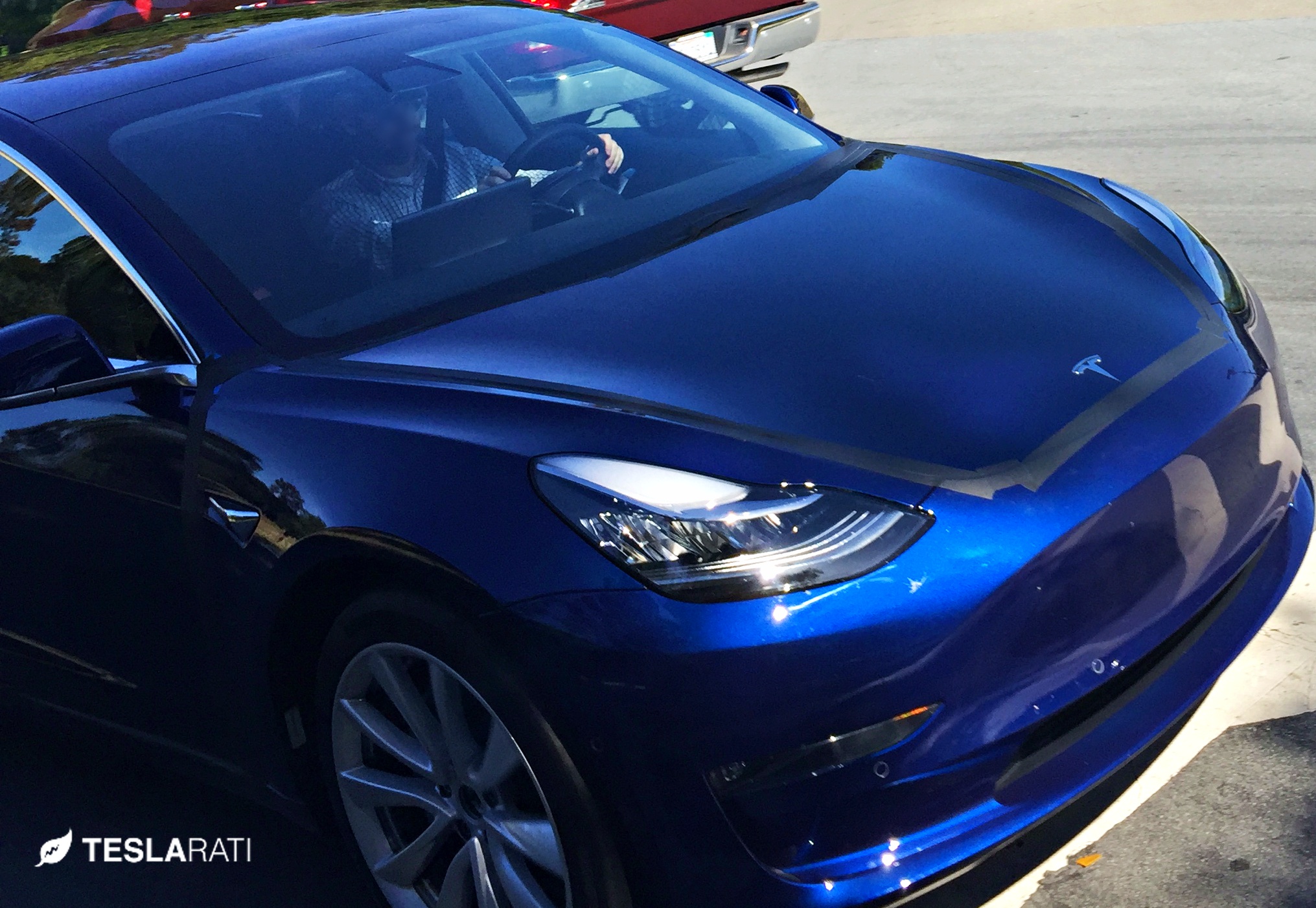

Investor's Corner
Tesla sets record vehicle production, $2.7 billion revenue, Model 3 on track for July production
Tesla released its first quarter 2017 earnings after the closing bell on Wednesday, surprising Wall Street with record production, delivery and revenue numbers. The electric car maker reported revenue of $2.7 billion in GAAP revenue, with $2.28 billion from automotive revenue. The GAAP net loss was $2.04, with non-GAAP loss of $1.33 a share, much larger than expected. This quarter compares well with Q4’16, when TSLA surprised Wall Street after posting a fourth quarter earnings loss of 69 cents a share, and revenue of $2.28 billion. The complete text of the Tesla First Quarter 2017 Update letter can be seen at the end of this article.
Revenue
In the letter, Tesla announced that “Q1 GAAP and Non-GAAP loss from operations improved from Q4.” As in the previous quarter, the estimates between analysts varied widely. According to a consensus poll with analysts conducted by FactSet, Tesla was expected to report a GAAP loss $1.15 a share in the quarter compared with a loss of $2.13 a share in the year-ago period, and an adjusted loss for one-time items of 83 cents. Estimize, a crowdsourcing platforms that polls analysts, hedge-fund managers executives and others, expected a loss of just 17 cents a share. E*trade provided its usual estimate range from its poll of analysts: 0.230 | -0.812 | -1.690 (High | Mean | Low), also with an average of about 82 cents.
Model 3
Many analysts have suggested that eyes would be focused intensely on Tesla’s upcoming milestones, particularly its progress on its Model 3 sedan. In the letter, Tesla announced that “Model 3 vehicle development is nearly complete as we approach the start of production. Release Candidate vehicles, built using production-intent tooling and processes, are being tested to assess fit and finish, to support vehicle software development and to ensure a smooth and predictable homologation process. Road testing is also underway to refine driving dynamics and ensure vehicle durability.” Additionally, “simultaneously, preparations at our production facilities are on track to support the ramp of Model 3 production to 5,000 vehicles per week at some point in 2017, and to 10,000 vehicles per week at some point in 2018.”  The company also reported record high orders in Q1 for its Model S and X vehicles. The big run up to the stock in 2017 started when Tesla reported first-quarter deliveries, just over 25,000, on the high end of expectations. Investors will be listening for additional information about the status of the Model 3 manufacturing during the First Quarter 2017 Financial Results Q&A Conference Call scheduled for 2:30 pm PT today. The run up of the stock is also due to the fact that many on Wall Street believe that Tesla has worked out some of its manufacturing kinks and is on track to start delivering to employees the first few Model 3 sedans in July, as promised.
The company also reported record high orders in Q1 for its Model S and X vehicles. The big run up to the stock in 2017 started when Tesla reported first-quarter deliveries, just over 25,000, on the high end of expectations. Investors will be listening for additional information about the status of the Model 3 manufacturing during the First Quarter 2017 Financial Results Q&A Conference Call scheduled for 2:30 pm PT today. The run up of the stock is also due to the fact that many on Wall Street believe that Tesla has worked out some of its manufacturing kinks and is on track to start delivering to employees the first few Model 3 sedans in July, as promised.
Cash
In the letter, Tesla announced that “Q4 to Q1 cash increased by over $4 billion. Cash at the end of Q4 2016 was $3.4 billion. Tesla raised more capital in the quarter with its March $1.5B Offering of Common Stock and Convertible Senior Notes.
TSLA Stock
Tesla shares have been going though the roof, up 80% to a record close of $322.83 on Monday, since the December low when they closed at $181.47. The past three weeks has experienced a string of record highs and the stock has traded above $300 for the better part of April, with an intra-day high of $327.66 on Monday. From a technical perspective, the sky is the limit, and while the shares have been overbought since the beginning of the year when they were trading at $214, there does not seem to be any bad news that can stop the stock from going up. This week TSLA market cap, again, topped GM as the most valuable car maker in the US with a value of over $52B vs. GM’s $50B.
While TSLA stock has soared, traders short selling TSLA have lost $3.7B in 2017, far more than has been lost shorting any other U.S. stock. This is more than the combined losses of short sellers in Apple (AAPL), Amazon (AMZN) and Netflix (NFLX), according to financial analytics firm S3 Financial Partners. Short bets against TSLA have grown to $10.1B from $8.7B at the start of April, when the more recent TSLA run started. “Momentum” traders are riding TSLA stock up and making incredible returns, especially on options, while “fundamental” traders hold onto their shorts and actually continue to build on them, hoping that the shoe will eventually drop.
As reported by Reuters in “Einhorn, nursing losses on Tesla, says investors ‘hypnotized’ by Musk”, hedge fund manager David Einhorn said on Wednesday that “Einhorn’s Greenlight Capital hedge fund bet against Tesla shares during the first three months of year, racking up losses on its short position. Greenlight did not disclose its current position on Tesla.” Unfortunately for David and other short sellers, barring a delay on delivery of Model 3, the momentum traders may still have the upper hand, at least for the rest of 2017. Today’s session ended up closing 2.55% lower at $310.76. Looking at the extended trading action after the close, the initial reaction to the numbers for Q1 2017 is nil: stock moved to $312. Expect an uneventful opening on Thursday.
Tesla First Quarter 2017 Update http://www.teslarati.com/wp-content/uploads/2017/05/TSLA_Update_Letter_2017_1Q.pdf

Investor's Corner
Tesla stock closes at all-time high on heels of Robotaxi progress

Tesla stock (NASDAQ: TSLA) closed at an all-time high on Tuesday, jumping over 3 percent during the day and finishing at $489.88.
The price beats the previous record close, which was $479.86.
Shares have had a crazy year, dipping more than 40 percent from the start of the year. The stock then started to recover once again around late April, when its price started to climb back up from the low $200 level.
This week, Tesla started to climb toward its highest levels ever, as it was revealed on Sunday that the company was testing driverless Robotaxis in Austin. The spike in value pushed the company’s valuation to $1.63 trillion.
Tesla Robotaxi goes driverless as Musk confirms Safety Monitor removal testing
It is the seventh-most valuable company on the market currently, trailing Nvidia, Apple, Alphabet (Google), Microsoft, Amazon, and Meta.
Shares closed up $14.57 today, up over 3 percent.
The stock has gone through a lot this year, as previously mentioned. Shares tumbled in Q1 due to CEO Elon Musk’s involvement with the Department of Government Efficiency (DOGE), which pulled his attention away from his companies and left a major overhang on their valuations.
However, things started to rebound halfway through the year, and as the government started to phase out the $7,500 tax credit, demand spiked as consumers tried to take advantage of it.
Q3 deliveries were the highest in company history, and Tesla responded to the loss of the tax credit with the launch of the Model 3 and Model Y Standard.
Additionally, analysts have announced high expectations this week for the company on Wall Street as Robotaxi continues to be the focus. With autonomy within Tesla’s sights, things are moving in the direction of Robotaxi being a major catalyst for growth on the Street in the coming year.
Elon Musk
Tesla needs to come through on this one Robotaxi metric, analyst says
“We think the key focus from here will be how fast Tesla can scale driverless operations (including if Tesla’s approach to software/hardware allows it to scale significantly faster than competitors, as the company has argued), and on profitability.”

Tesla needs to come through on this one Robotaxi metric, Mark Delaney of Goldman Sachs says.
Tesla is in the process of rolling out its Robotaxi platform to areas outside of Austin and the California Bay Area. It has plans to launch in five additional cities, including Houston, Dallas, Miami, Las Vegas, and Phoenix.
However, the company’s expansion is not what the focus needs to be, according to Delaney. It’s the speed of deployment.
The analyst said:
“We think the key focus from here will be how fast Tesla can scale driverless operations (including if Tesla’s approach to software/hardware allows it to scale significantly faster than competitors, as the company has argued), and on profitability.”
Profitability will come as the Robotaxi fleet expands. Making that money will be dependent on when Tesla can initiate rides in more areas, giving more customers access to the program.
There are some additional things that the company needs to make happen ahead of the major Robotaxi expansion, one of those things is launching driverless rides in Austin, the first city in which it launched the program.
This week, Tesla started testing driverless Robotaxi rides in Austin, as two different Model Y units were spotted with no occupants, a huge step in the company’s plans for the ride-sharing platform.
Tesla Robotaxi goes driverless as Musk confirms Safety Monitor removal testing
CEO Elon Musk has been hoping to remove Safety Monitors from Robotaxis in Austin for several months, first mentioning the plan to have them out by the end of 2025 in September. He confirmed on Sunday that Tesla had officially removed vehicle occupants and started testing truly unsupervised rides.
Although Safety Monitors in Austin have been sitting in the passenger’s seat, they have still had the ability to override things in case of an emergency. After all, the ultimate goal was safety and avoiding any accidents or injuries.
Goldman Sachs reiterated its ‘Neutral’ rating and its $400 price target. Delaney said, “Tesla is making progress with its autonomous technology,” and recent developments make it evident that this is true.
Investor's Corner
Tesla gets bold Robotaxi prediction from Wall Street firm
Last week, Andrew Percoco took over Tesla analysis for Morgan Stanley from Adam Jonas, who covered the stock for years. Percoco seems to be less optimistic and bullish on Tesla shares, while still being fair and balanced in his analysis.

Tesla (NASDAQ: TSLA) received a bold Robotaxi prediction from Morgan Stanley, which anticipates a dramatic increase in the size of the company’s autonomous ride-hailing suite in the coming years.
Last week, Andrew Percoco took over Tesla analysis for Morgan Stanley from Adam Jonas, who covered the stock for years. Percoco seems to be less optimistic and bullish on Tesla shares, while still being fair and balanced in his analysis.
Percoco dug into the Robotaxi fleet and its expansion in the coming years in his latest note, released on Tuesday. The firm expects Tesla to increase the Robotaxi fleet size to 1,000 vehicles in 2026. However, that’s small-scale compared to what they expect from Tesla in a decade.
Tesla expands Robotaxi app access once again, this time on a global scale
By 2035, Morgan Stanley believes there will be one million Robotaxis on the road across multiple cities, a major jump and a considerable fleet size. We assume this means the fleet of vehicles Tesla will operate internally, and not including passenger-owned vehicles that could be added through software updates.
He also listed three specific catalysts that investors should pay attention to, as these will represent the company being on track to achieve its Robotaxi dreams:
- Opening Robotaxi to the public without a Safety Monitor. Timing is unclear, but it appears that Tesla is getting closer by the day.
- Improvement in safety metrics without the Safety Monitor. Tesla’s ability to improve its safety metrics as it scales miles driven without the Safety Monitor is imperative as it looks to scale in new states and cities in 2026.
- Cybercab start of production, targeted for April 2026. Tesla’s Cybercab is a purpose-built vehicle (no steering wheel or pedals, only two seats) that is expected to be produced through its state-of-the-art unboxed manufacturing process, offering further cost reductions and thus accelerating adoption over time.
Robotaxi stands to be one of Tesla’s most significant revenue contributors, especially as the company plans to continue expanding its ride-hailing service across the world in the coming years.
Its current deployment strategy is controlled and conservative to avoid any drastic and potentially program-ruining incidents.
So far, the program, which is active in Austin and the California Bay Area, has been widely successful.








